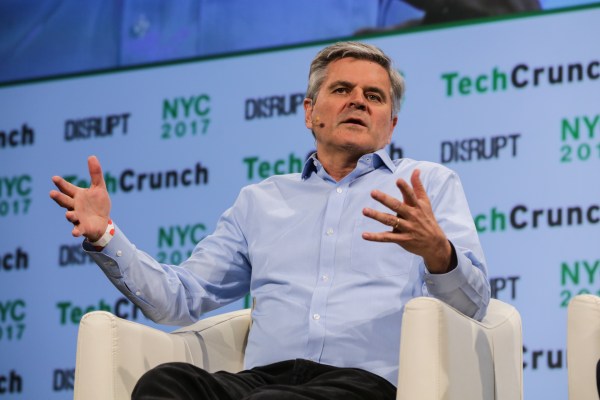AOL co-founder Steve Case took to the stage at Disrupt New York this morning to discuss myriad issues, from his former company’s merging with one-time competitor Yahoo (pro) to a potential run for Congress (naw). It’s clear, however, that Case’s current passions lie in his organization, Rise of the Rest, which seeks to shine a light on startups outside of a few key tech hubs.
As Case pointed out in a recent conversation with TechCrunch, nearly 80 percent of venture capital funds get pumped into three states: California, New York and Massachusetts. Much of this is due to the fact that VCs simply don’t like to venture too far from their own backyards. “The reason it doesn’t happen as much as it could is because most venture capitalists get in their cars and drive to these companies,” Case told panel moderator John Biggs.
Rise of the Rest has devoted itself to touring underserved areas in order to highlight the innovation that is beginning to pop up in areas outside of the Silicon Valley, New York City and Boston. Case and team have taken multiple bus tours across the country as part of that outreach, hitting, among other places, Rust Belt cities like Detroit and Cleveland that were once hubs of innovation but have since fallen on tough times as the focus of investment has shifted to other areas.
“It’s worth remembering that Detroit 75 years ago was like the Silicon Valley,” said Case. “At the time, it was the hottest innovation city in the country, because the automobile was the hot new technology at the time. Silicon Valley was like fruit orchards. These things change. But they lost their way. Detroit lost 60 percent of its population in the last 50 years and they went bankrupt because they lost their entrepreneur mojo.”
But while a few key areas continue to dominate the majority of VC funds, Case says that that, too, is beginning to shift. Pockets of the country are seeing a resurgence of startup activity. Pittsburgh, for one, represents an ideal example of how technology can help revive a once-depressed city — in that case, courtesy of Carnegie Mellon, which has helped bring major investments in autonomous vehicles and robotics to the city.
[gallery ids="1490345,1490344,1490339,1490340,1490341,1490342,1490343,1490338,1490337,1490336,1490335"]
But even without such key players, there’s still opportunity. “Last week I was in Cleveland,” explained Case. “That was one of the cities people said there wasn’t a lot of innovation happening in. But there is a lot of innovation. Our new partner at Revolution, JD Vance, moved to Columbus, Ohio because he wanted to focus on investing there. We’re trying to gather together as many people as we can to join us in building up communities and networks in all of these different parts of the country.”
But for such a plan to be successful, it will require VCs to move outside of their comfort zone and look toward areas they haven’t traditionally considered hotbeds for innovation.
Case, of course, brings insight into the shifting world of technology. He used a question about the AOL/Yahoo/Oath situation to recount (once again), the time that America Online attempted to buy a fledgling two-person startup called Yahoo for $2 million, joking that it was double what it had tried to pay for one-person startup, WebCrawler.
